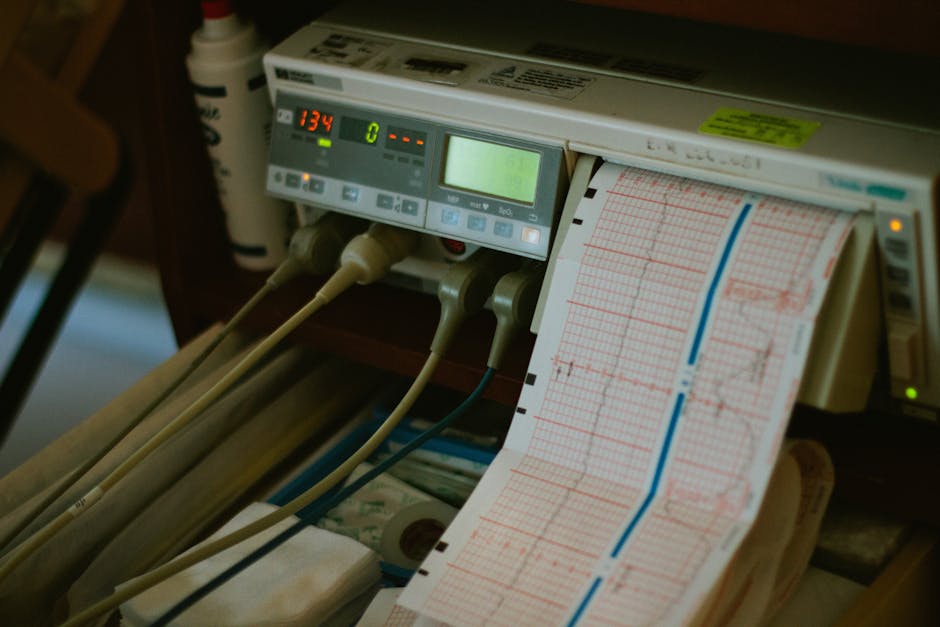Understanding Different Medical Tests
Medical tests play a crucial role in diagnosing diseases, monitoring health conditions, and guiding treatment plans. From blood tests to imaging scans, these tests provide valuable information to healthcare professionals, enabling them to make informed decisions about patient care. Understanding the different types of medical tests, how they work, and what they can reveal is essential for anyone interested in healthcare or seeking to take charge of their own well-being.
The Importance of Medical Tests

Medical tests are vital tools in the field of healthcare, helping doctors detect, diagnose, and monitor various medical conditions. These tests can range from simple blood tests to sophisticated imaging techniques, each serving a specific purpose in evaluating a patient’s health status. By analyzing the results of these tests, healthcare providers can identify underlying health issues, track the progression of diseases, and assess the effectiveness of treatments.
For patients, medical tests offer valuable insights into their health and can help them make informed decisions about their care. By understanding the different types of medical tests available, individuals can proactively manage their health, detect potential problems early, and work with their healthcare providers to develop personalized treatment plans.
Types of Medical Tests

Medical tests can be broadly classified into several categories based on the type of sample collected or the technology used to analyze the sample. Some common types of medical tests include:
Blood Tests
Blood tests, also known as blood work or blood panels, are among the most commonly performed medical tests. These tests involve collecting a sample of blood from a patient and analyzing it to measure various components such as red blood cells, white blood cells, platelets, and different chemicals and proteins in the blood. Blood tests can provide valuable information about a patient’s overall health, organ function, and the presence of certain diseases or conditions.
Imaging Tests
Imaging tests use various technologies to create detailed images of the inside of the body. Common imaging tests include X-rays, CT scans, MRI scans, ultrasounds, and PET scans. These tests can help doctors visualize internal structures, organs, and tissues, allowing them to diagnose conditions such as fractures, tumors, infections, and abnormalities. Imaging tests are valuable tools in the diagnosis and monitoring of a wide range of medical conditions.
Genetic Tests
Genetic tests analyze an individual’s DNA to identify changes or mutations that may be associated with genetic disorders or an increased risk of certain diseases. These tests can provide valuable information about a person’s genetic makeup, ancestry, and predisposition to specific health conditions. Genetic testing can help individuals make informed decisions about their health, lifestyle choices, and medical treatments.
Urine Tests
Urine tests, also known as urinalysis, involve analyzing a sample of urine to detect various substances such as glucose, protein, blood cells, and bacteria. These tests can provide valuable information about kidney function, urinary tract infections, diabetes, and other medical conditions. Urine tests are commonly used in routine health screenings and the diagnosis of urinary system disorders.
Biopsy
A biopsy is a medical test that involves removing a small sample of tissue or cells from a suspicious area of the body and examining it under a microscope. Biopsies are commonly used to diagnose cancer, infections, inflammatory diseases, and other conditions. Depending on the location and nature of the tissue sample, biopsies can be performed using various techniques such as needle biopsy, surgical biopsy, or endoscopic biopsy.
How Medical Tests Work

Medical tests use a variety of techniques and technologies to analyze different types of samples and provide valuable information about a patient’s health. The specific process and methodology used in a medical test depend on the type of test being performed and the information being sought. Here’s a general overview of how some common medical tests work:
Blood Tests
During a blood test, a healthcare provider will collect a sample of blood from a patient, usually by inserting a needle into a vein in the arm. The blood sample is then sent to a laboratory for analysis. In the lab, technicians use specialized equipment to measure various components of the blood, such as red blood cells, white blood cells, platelets, and different chemicals and proteins. The results of the blood test can provide valuable information about a patient’s overall health, organ function, and the presence of certain diseases or conditions.
Imaging Tests
Imaging tests use different technologies to create detailed images of the inside of the body. X-rays use ionizing radiation to produce images of bones, tissues, and organs. CT scans combine X-rays and computer technology to generate cross-sectional images of the body. MRI scans use magnetic fields and radio waves to create detailed images of soft tissues and organs. Ultrasounds use high-frequency sound waves to produce real-time images of internal structures. PET scans involve injecting a radioactive tracer into the body to create images of metabolic activity. These imaging tests can help doctors visualize internal structures, organs, and tissues, allowing them to diagnose a wide range of medical conditions.
Genetic Tests
In genetic testing, a sample of DNA is collected from an individual, usually through a blood sample or a cheek swab. The DNA sample is then analyzed in a laboratory to identify changes or mutations that may be associated with genetic disorders or an increased risk of certain diseases. Genetic testing can provide valuable information about a person’s genetic makeup, ancestry, and predisposition to specific health conditions. The results of genetic tests can help individuals make informed decisions about their health, lifestyle choices, and medical treatments.
Urine Tests
During a urine test, a patient provides a sample of urine, which is then analyzed in a laboratory. Urine tests can detect various substances such as glucose, protein, blood cells, and bacteria. These tests can provide valuable information about kidney function, urinary tract infections, diabetes, and other medical conditions. Urine tests are commonly used in routine health screenings and the diagnosis of urinary system disorders.
Biopsy
In a biopsy, a healthcare provider removes a small sample of tissue or cells from a suspicious area of the body. The tissue sample is then examined under a microscope to look for signs of disease or abnormalities. Biopsies are commonly used to diagnose cancer, infections, inflammatory diseases, and other conditions. The specific technique used for a biopsy depends on the location and nature of the tissue sample being collected.
Common Misconceptions about Medical Tests

Despite their importance in healthcare, medical tests are often surrounded by misconceptions and misunderstandings. Here are some common misconceptions about medical tests:
Medical tests are always accurate
While medical tests are valuable tools in diagnosing and monitoring health conditions, they are not always 100% accurate. False-positive and false-negative results can occur, leading to incorrect diagnoses or unnecessary treatments. It’s essential to interpret medical test results in the context of a patient’s overall health and clinical history.
All medical tests are invasive
While some medical tests involve invasive procedures, such as biopsies or surgical tests, many tests can be performed non-invasively. Blood tests, imaging tests, and urine tests are examples of non-invasive medical tests that provide valuable information without the need for surgery or needles.
Medical tests are only necessary when symptoms are present
Medical tests can be valuable tools in detecting health conditions before symptoms appear. Routine screenings, such as mammograms, Pap smears, and blood tests, can help detect diseases in their early stages when treatment is most effective. It’s essential to discuss the appropriate screening tests with a healthcare provider based on individual risk factors and medical history.
Medical tests are always expensive
While some medical tests can be costly, many routine tests are covered by health insurance or offered at low cost through community health programs. It’s essential to check with insurance providers and healthcare facilities to understand the costs associated with specific medical tests and explore options for financial assistance if needed.
FAQs about Medical Tests
Q: Are medical tests painful?
A: The level of discomfort associated with a medical test depends on the type of test being performed. While some tests, such as blood tests or biopsies, may cause mild discomfort, most tests are relatively painless and well-tolerated by patients.
Q: How long do medical test results take?
A: The turnaround time for medical test results varies depending on the type of test and the laboratory processing the sample. In general, most routine tests can provide results within a few days to a week. Some tests, such as genetic testing or specialized imaging studies, may take longer to process and interpret.
Q: Can medical tests be done at home?
A: While some medical tests, such as pregnancy tests or glucose monitoring, can be performed at home, most diagnostic tests require specialized equipment and trained healthcare providers for accurate results. It’s essential to consult with a healthcare provider to determine the most appropriate testing options for specific health concerns.
Conclusion
Understanding different medical tests is essential for anyone interested in healthcare or seeking to take control of their health. Medical tests provide valuable information about a patient’s health status, aiding in the diagnosis, monitoring, and treatment of various medical conditions. By familiarizing yourself with the different types of medical tests available, how they work, and what they can reveal, you can empower yourself to make informed decisions about your health and well-being.
Whether it’s a routine blood test, an advanced imaging scan, or a genetic test, each medical test plays a vital role in evaluating and managing health conditions. By partnering with healthcare providers and staying informed about the latest advancements in medical testing, individuals can work towards achieving optimal health and well-being.
To wrap things up, medical tests are powerful tools that provide valuable insights into our health and help healthcare providers deliver effective care. By understanding the various types of medical tests and how they work, individuals can take proactive steps towards maintaining their health and well-being. Remember, knowledge is power, and when it comes to medical tests, understanding is key.




